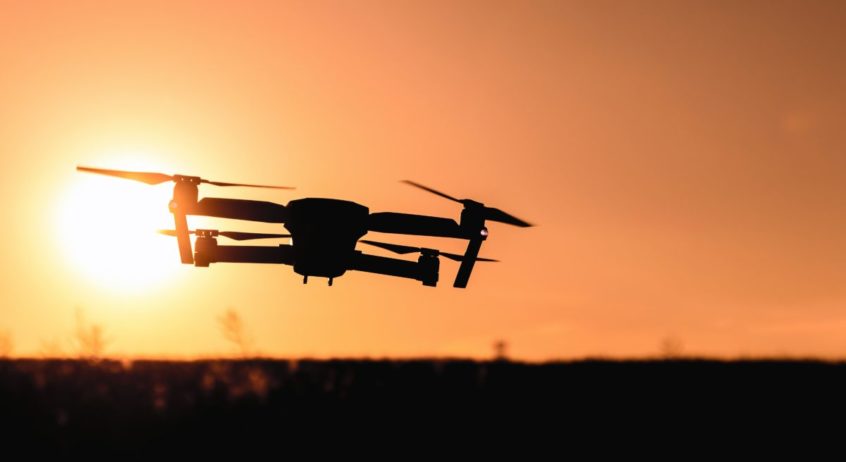1.) Population Monitoring
Amongst biologist and conservationists it has become a know fact that drones are a very efficient way to monitor or keep an eye on endangered populations across the globe. One of the biggest labors for biologists, conservationists, park rangers and many others involved is simply the accurate monitoring of the population of a given species or herd or pack or what have you. Whether it be in a massive big game park in Africa or in the jungles of Asia drones are enabling those charged with protecting these animals amazingly efficient ways to do some of the hardest work.
For years it has been up to underpaid and hardworking men and women to pile into jeeps or on bikes or even on foot or in rickety helicopters or worn out airplanes and spend weeks upon weeks combing the land in search of individual animals that are part of a threatened population. The sheer effort of such undertakings cannot be accurately expressed, the dangers of basically venturing off into the wild for weeks on end, camping and facing countless threats all to count a few hundred animals, it seems almost crazy but that’s what these men and women do.
For example just this past year in South East Asia drones have been used regularly to help monitor the Orangutan population because of the palm oil industry and how quickly it is destroying the orangutan habitat. Scientist and biologist are trying to get an accurate reading of just how the population is being affected so that they can go about preventing the Orangutans from becoming endangered.
As efficient as drones are the real reason for their success in nature conservation is simply the money that is saved. Drones are cutting costs literally in half! It used to be that getting an accurate monthly count of the Orangutan population could easily cost $50,000 for 6 months. That number is now down to $15-20,000 so it is almost a no-brainer. Even if drones were not as efficient it would still make sense but the truth is not only are drones much less expensive to use, they are far more efficient than previous methods. Drones can be programmed with the size and dimensions of certain orangutans, and in brief flyovers covering large areas of jungle they can take high def pictures and videos that can not only count the number of orangutans but also report on their basic size and condition. Not to mention the safety of using drones where now officials can sit safely in the ranger station instead of flying dangerously low in ancient bush planes in hopes of spotting an orangutan.
2.) Saving the World's Most Trafficked Animal
Very few people can answer the following question without consulting Google: ‘What is the most illegally trafficked animal in the world?’ Common guesses are Elephants, Pandas or Blue Whales, all of the big ones but in actuality the animal that is bought and sold on the black market twice as much as the second place finisher is the pangolin. About the size of a smaller house cat or larger rabbit and covered in thick scales that are very similar to human fingernails. They are the only mammal with scales. Hundreds of thousands of pangolins are slaughtered and sold every year. It has been estimated that the pangolin could be wiped off the face of the earth in a mere 3 years if the trafficking is not stopped. Pangolin meat is consumed as a source of protein throughout Asia and Africa, and their scales are often used in traditional Asian medicines and in luxury goods.
Drone technology is allowing conservationists and scientist are able to more efficiently and quickly monitor their population numbers and location and this easy access to surveillance of the tiny critters is giving them a fighting chance. The more scientists and conservationists can study them and learn about their populations and habitats the more they can help to grow and stabilize the population and increase efforts to protect them. Using drones to accurately gauge not only population numbers but in what areas the populations are highest we can better predict where poachers may try and strike next.
3.) Newborn Location
Another very crucial task for any conservationist, biologist or scientist, when trying to help an animal population, is the insurance of safe newborns, which can be a difficult task because finding them can often be like looking for a needle in a massive haystack.
Whether it’s a rancher in Montana with 6,000 head of cattle trying to find a recently born calf, or a ranger on the massive Serengeti Reserve in Africa trying to locate a newborn impala or lion cub, whatever the newborn may be, thermal and visual light sensor equipped drones are making this task ten times easier than it used to be. Before the utilization of drones these searches were monumental tasks that required not only money and equipment but also countless man-hours. But now, thanks to drones, any newborn regardless of shape or size can be quickly and safely located, ensuring their survival.
Often times mother animals on these massive wildlife parks are animals that have been rescued and have been through traumatic experiences, and because of this, sometimes, maternal instincts get disrupted or confused, which can mean death for a vulnerable newborn, and time can be a major factor. In the past, a lot of times, newborns are not found quickly enough and suffer injury, sickness and all too often death.
4.) Planting Trees
This is one of the most innovative and exciting ways in which drones are being used to fight deforestation that is taking place across the globe and having major negative impacts on both plant and wildlife alike. Tree farms are helping somewhat to combat deforestation but the effort and cost and time needed to develop a successful and healthy tree farm make it nearly impossible to keep up with the rate at which trees are being cut down.
Drones are being used to help increase the growth of trees by specially outfitting drones to be able to plant trees in an automated way that will require no human operator. The process is quite amazing and though it is still in the testing stage there is not doubt to the positive impact it could have. The drones are given a specific automated flight plan over the desired planning area and they are equipped with a long plastic tube that extends downward sort of like a rifle barrel that is used to shoot the saplings down into the earth at the proper depth. A drone can plant a sapling about every ten seconds and it is changing the ways in which trees are being planted.
One major drawback of tree farms is that once the trees grow they have to be transported to their permanent location and this can only be so far from the tree farm because a tree can not be on the road for weeks at a time getting to its new home. Drones are allowing for large numbers of trees to be planted in the remote areas where they are often needed most. For example of mountainsides or steep hills or deep in the jungle or forest. Instead of people having to manually walk to each spot and get down to plant the seed, drones can now cover a much larger area, planting many more saplings and doing all this at a faster and cheaper rate. The next step is using drones to water such remotely planted trees or to provide nutrients by dropping chemicals into the soil, all this and much more are sure to come as drones and drone technology develops. The future of our forests may lie in the hands of these tree planting drones.
5.) Poaching Prevention
Probably the way in which drones are having the biggest positive impact in aiding conservation efforts across the globe is by helping to prevent illegal poaching which has been the great plague of animal life on this earth. The problem with preventing poaching is that the majority of areas where poaching is most rampant are areas that have high poverty, little technology, or lacking development and the most difficult aspect is that most of the worst poaching takes place in very remote locations that are very difficult to get to. Often times local poachers know these isolated areas where vehicles cannot get too and planes can not see them from above due to the dense tree coverage. All these factors make stopping poaching all the more difficult and half the battle is simply finding the poachers and as a result it is the animals who suffer.
Despite the best efforts of many hardworking and selfless people who are dedicated to protecting animals and stopping violent poachers, it is a fight that oftentimes they cannot win due to lack or resources or man power. Drones are changing all this in a big way. For example now a conservation team in California can aid assist park officials in Nairobi by flying drones above a suspected poacher hotspot and can quickly and easily notify authorities of their exact location and movements.
Often times now, law enforcement does not attempt to apprehend the poachers right away, especially if they have already made a kill,, instead a drone will hover quietly and basically invisibly above them and using thermal imaging or high def cameras simply follow them as they load and transport their kill which often leads officials to even bigger busts at the source. It is not like it used to be when officials used a plane or helicopter which instantly made the poachers aware of their pursuers. Today with drones the poachers have no idea they are being watched and often lead authorities into drug houses or black market locations. Not only is using drones to combat poachers easier and more efficient and affordable but t is also much safer for all involved. No more violent altercations or jungle shootouts or wild chases through dangerous areas. Drones are not only saving the lives of these precious animals but they are also protecting the lives of those working tirelessly to save them.


